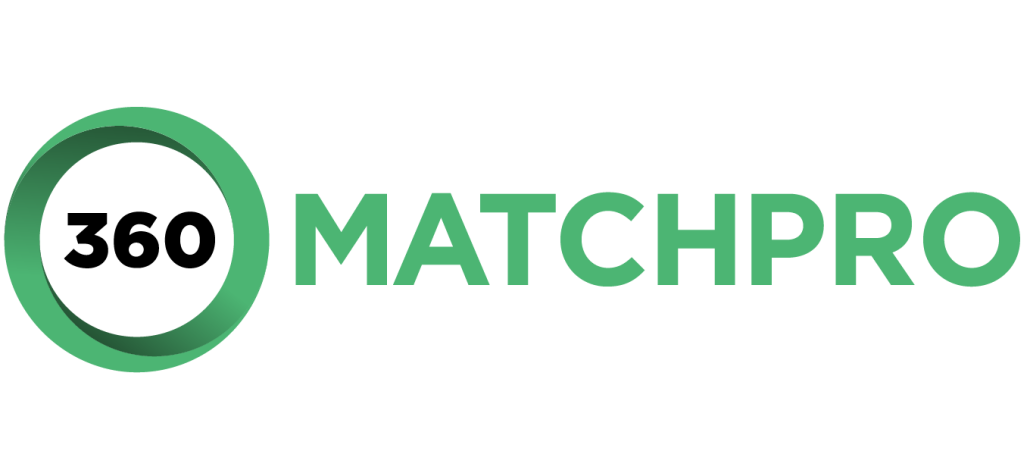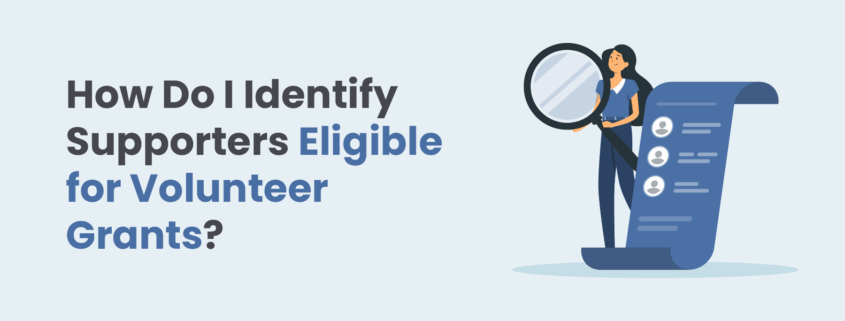How Do I Identify Supporters Eligible for Volunteer Grants?
Identifying supporters who are eligible for volunteer grants is a crucial step for nonprofits looking to maximize their funding potential. Volunteer grants, also known as Dollars for Doers programs, are financial contributions made by companies to nonprofits where their employees volunteer. Understanding how to effectively identify these supporters can significantly enhance your organization’s fundraising efforts. In this article, we will explore the steps necessary to identify eligible volunteers, the benefits of volunteer grants, and strategies to engage your supporters.
Understanding Volunteer Grants
Volunteer grants are a form of corporate philanthropy that incentivizes employees to volunteer their time by providing financial support to the organizations they serve. These grants vary widely in terms of eligibility criteria, grant amounts, and application processes.
Types of Volunteer Grants
There are several types of volunteer grants that organizations should be aware of:
- Hourly Grants: Some companies, like Microsoft, offer grants based on the number of hours volunteered, providing a variable amount per hour.
- Threshold-Based Grants: Companies such as Verizon may require employees to reach a certain number of hours before a set grant amount is issued to the nonprofit.
Understanding the different types of volunteer grants is essential for nonprofits to effectively leverage these opportunities. Hourly grants provide a direct monetary contribution for every hour volunteered, making it easy to calculate potential funding based on volunteer engagement. On the other hand, threshold grants require volunteers to meet a specific number of hours before qualifying for a grant, encouraging consistent and sustained volunteer efforts.
By familiarizing themselves with these grant types, nonprofits can better guide their volunteers and maximize the funding they can receive through corporate partnerships.
Benefits of Volunteer Grants
Understanding the benefits of volunteer grants can help motivate your supporters to participate:
- Increased Funding: Volunteer grants provide additional financial resources to nonprofits, allowing them to expand their programs and services.
- Employee Engagement: Companies that offer volunteer grants often see increased employee satisfaction and retention, as employees feel their contributions are valued.
- Community Impact: By encouraging volunteerism, companies contribute to the betterment of their communities, fostering a culture of giving back.
As you can see, the advantages of volunteer grants extend far beyond financial support for nonprofits. By understanding these benefits, nonprofits can encourage greater participation and strengthen their connections with corporate partners.
Collecting Employment Information to Uncover Volunteer Grants
To identify eligible volunteers, it is essential to gather employment information from your supporters. This can be achieved through various methods:
Volunteer Registration Forms
Incorporating fields for current employer information in your volunteer registration forms is a straightforward way to collect necessary data. This allows you to track which companies your volunteers are associated with and whether those companies offer volunteer grants.
Email Domain Screening
Another effective method is to analyze the email addresses of your volunteers. By screening email domains, you can infer the employers of your supporters, which can help in identifying potential grant eligibility.
Social Media and Online Research
Utilizing platforms like LinkedIn can provide valuable insights into your volunteers’ employment status. By researching their profiles, you can gather information about their current employers and their involvement in volunteer grant programs.
Employer Appends
Employer appends involve using external data sources to match volunteer records with their employers, even if that information was not provided directly. This method helps nonprofits automatically update volunteer data with accurate employment details, making it easier to identify which companies offer volunteer grant programs. By using employer appends, nonprofits can quickly pinpoint potential grant opportunities without relying solely on volunteers to supply employment information.
Implementing Efficient Volunteer Hour Tracking
Accurate tracking of volunteer hours is essential for verifying eligibility and facilitating grant applications. Here are some strategies to consider:
Volunteer Management Software
Utilizing volunteer management software can streamline the tracking process. These tools allow for real-time tracking of volunteer hours and automate reporting, making it easier to manage and verify volunteer contributions.
Centralized Systems
Integrating timesheets, sign-ins, and training records into a centralized system can create a comprehensive log of volunteer activities. This organized approach ensures compliance with grant requirements and enhances reporting accuracy.
Communicating Grant Opportunities to Volunteers
Effectively communicating volunteer grant opportunities to your supporters is essential for maximizing participation and ensuring that your nonprofit benefits from these valuable funding programs. Raising awareness and keeping volunteers informed throughout the year helps build a culture of engagement around these opportunities.
Here are some communication strategies that can help ensure your volunteers are aware of and motivated to take advantage of volunteer grants:
Establishing Direct Communication
Personal communication is one of the most effective ways to inform volunteers about grant opportunities. By integrating volunteer grant information into the onboarding process, new volunteers can immediately understand the potential for matching donations. Additionally, hosting dedicated sessions or mentioning grant programs during volunteer events can provide an excellent opportunity for face-to-face interaction, ensuring volunteers are well-informed. It’s also crucial to clearly outline eligibility requirements and the steps involved in applying, as this makes the process feel more approachable. Having staff or experienced volunteers available to answer questions can further increase confidence and participation.
Implementing Digital Outreach
In today’s digital age, leveraging online channels is key to spreading awareness about volunteer grants. Regularly including volunteer grant information in newsletters and emails can ensure that your supporters stay updated on available opportunities. Tailor your messaging to highlight the benefits of volunteer grants, share success stories, and include clear calls to action. Social media platforms, with their broad reach and interactive nature, are also excellent tools for communicating grant opportunities. Use social media to post reminders, feature stories about volunteers who’ve benefited from grants, and provide tips for applying. Consistent updates and visual content can keep volunteer grants top of mind and encourage more volunteers to participate. With digital tools, you can reach a larger and more diverse audience, ensuring that more volunteers are aware of the resources at their disposal.
Incorporating Volunteer Grant Information into Volunteer Training
Integrating volunteer grant information into your organization’s volunteer training programs is another effective strategy to ensure volunteers are aware of these opportunities from the start. During training, volunteers can be introduced to the concept of volunteer grants, their benefits, and the process for applying. This not only provides clarity but also encourages volunteers to take an active role in seeking out opportunities to contribute to your organization’s funding. Providing volunteers with printed or digital resources outlining the steps to apply for grants can make the process more accessible. Additionally, offering a Q&A session during training can help clarify any uncertainties and ensure that volunteers feel supported throughout the process.
Instituting Targeted Communication for Corporate Volunteers
For volunteers who work for companies with established volunteer grant programs, a more targeted communication approach is necessary. Identifying volunteers from these companies allows your nonprofit to tailor your outreach specifically to this group. For example, after confirming that a volunteer works for a company offering grants, send a personalized email or message thanking them for their time and encouraging them to apply for the grant. You can also provide specific guidelines on how to request matching donations from their employer. Offering a step-by-step guide can ensure that the volunteer feels confident in completing the grant application and helps your organization receive the maximum funding possible.
Providing Regular Reminders and Updates
Even after volunteers are initially informed about grant programs, it’s crucial to maintain regular communication to keep the topic top of mind. Setting up automated reminder emails or social media posts about upcoming deadlines for volunteer grant applications or new grant opportunities can prompt volunteers to take action. Reminders can also be integrated into your regular volunteer engagement communications, such as during monthly check-ins or in newsletters. Regular updates ensure that volunteers are consistently aware of the programs available to them, increasing the likelihood of grant applications and contributions.
Encouraging Volunteer Grant Success Stories
One of the most compelling ways to engage your volunteers is to share success stories about how volunteer grants have positively impacted your organization. Featuring volunteers who have successfully navigated the grant application process can inspire others to follow suit. These stories can be shared in newsletters, on social media, or during volunteer events. By highlighting the direct impact of these grants, such as how the funds helped fund a specific project or helped the organization reach a fundraising goal, you can further motivate volunteers to participate in the program. This not only increases awareness but also creates a sense of community and shared purpose among volunteers.
Utilizing Volunteer Grant Databases
Leveraging databases that aggregate information on corporate volunteer grant programs can enhance your organization’s efficiency in identifying eligible volunteers. These resources can:
- Centralize Data: Offer a comprehensive view of available programs, making it easier to identify potential funding sources.
- Streamline Applications: Provide direct links to application forms and guidelines, simplifying the process for both staff and volunteers.
- Enhance Efficiency: By utilizing these tools, your organization can maximize its funding potential and ensure that no opportunities are overlooked.
Utilizing volunteer grant databases is a powerful way to enhance your nonprofit’s efficiency in identifying and applying for corporate support. By leveraging these tools, your organization can maximize funding opportunities and ensure that no potential grants are missed, ultimately boosting your nonprofit’s sustainability and impact.
Final Thoughts
Identifying supporters eligible for volunteer grants is a strategic process that can significantly enhance your nonprofit’s funding opportunities. By understanding corporate volunteer grant programs, collecting pertinent employment information, implementing efficient tracking systems, and communicating effectively with your volunteers, you can create a robust framework for maximizing these valuable resources. Engaging your supporters in this process not only benefits your organization but also fosters a culture of giving back within the community.
Maximize Your Fundraising with Double the Donation
Want to see how your volunteer grant efforts could translate into measurable revenue growth? With Double the Donation Volunteering, you can increase volunteer participation, guide supporters through volunteer grant submissions, and establish deeper corporate partnerships all in one place—making it easier to uncover hidden opportunities and showcase your program’s impact.
Discover how the right tools can turn volunteer hours into sustainable funding for your mission. Get a demo today!



